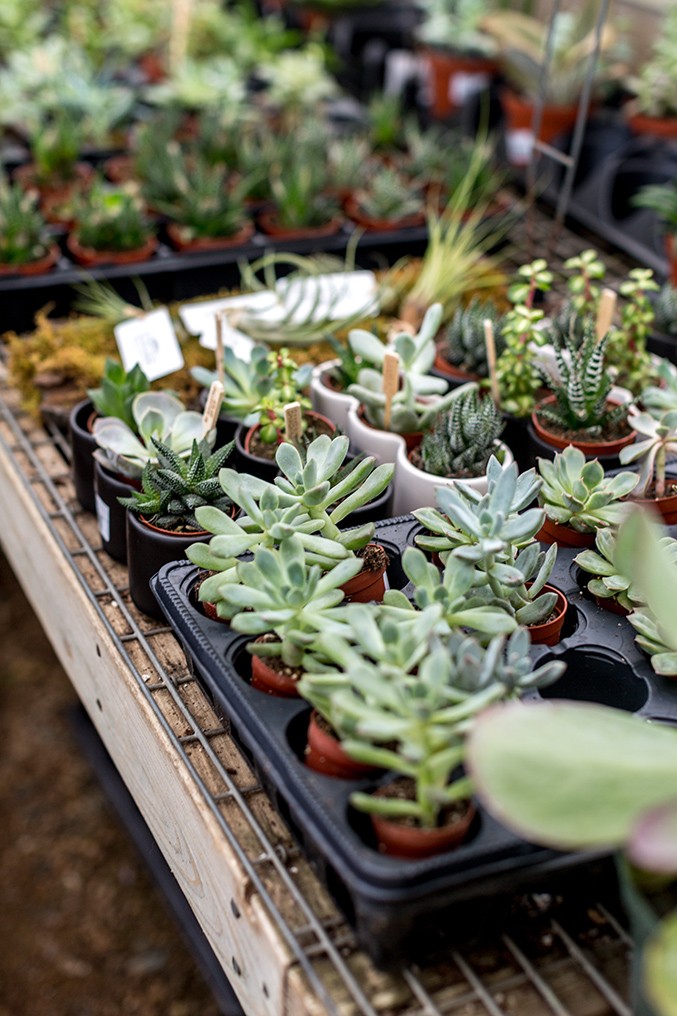Succulents have surged in popularity as indoor plants, loved for their unique shapes, low-maintenance nature, and ability to thrive in various home environments. However, even these resilient plants require proper care to flourish. Many beginners find themselves unsure about the best practices for keeping their indoor succulents healthy and vibrant. This guide, drawing on expert advice, will break down the essential steps to ensure your succulents not only survive but thrive indoors.
Essential Indoor Succulent Care Tips
Caring for indoor succulents doesn’t need to be complicated. By focusing on a few key areas, you can easily create an environment where your succulents will thrive. Here are five fundamental tips to help you master indoor succulent care:
1. Light is Key for Healthy Succulents
Sunlight is crucial for succulents. These plants need ample light to perform photosynthesis effectively. For indoor succulents, aim to place them within one foot of a window. The amount of sunlight required can vary depending on the succulent’s color.
- Colorful Succulents: Varieties with vibrant reds, oranges, or purples generally need more sunshine, ideally 6 or more hours of direct sunlight per day. South-facing windows are often ideal for these types of succulents.
- Green Succulents: Green succulents are slightly less demanding in terms of light and can thrive with around 3 to 4 hours of sunlight daily. East or west-facing windows can work well for greener varieties.
If your succulents are not receiving enough light, you might notice them becoming leggy (stretched out) as they reach for more light. Insufficient light can also lead to faded colors and weakened growth.
2. Ensure Proper Drainage for Succulent Pots
Succulents are highly susceptible to root rot if they sit in waterlogged soil. Therefore, drainage is paramount. When choosing pots for your indoor succulents, make sure they have drainage holes at the bottom. These holes allow excess water to escape, preventing the soil from becoming soggy.
To further enhance drainage, consider adding a layer of rocks or gravel at the bottom of your planter. This layer creates a space for water to collect away from the roots, promoting healthier root growth. Terracotta pots are also an excellent choice for succulents as they are porous and help the soil dry out more quickly.
3. Water Indoor Succulents Sparingly
One of the most common mistakes in succulent care is overwatering. Succulents are drought-tolerant plants that store water in their leaves and stems. They prefer infrequent but thorough watering.
- Summer Watering: During the summer growing season, water your indoor succulents approximately twice a month. Allow the soil to dry out completely between waterings.
- Winter Watering: In the winter months, when succulents are in a period of dormancy, reduce watering to once a month or even less.
A helpful tip is to check the soil moisture before watering. Insert your finger about an inch into the soil. If it feels dry, it’s time to water. If it’s still moist, wait a few more days. Setting reminders can be useful to maintain a consistent watering schedule without overdoing it.
4. Avoid Overwatering to Prevent Succulent Death
Overwatering is a leading cause of death for indoor succulents. It’s crucial to resist the urge to water them as frequently as you might water other houseplants. Succulents are adapted to arid environments and thrive on drier conditions.
Signs of overwatering in succulents include:
- Soft, mushy leaves that may turn yellow or translucent.
- Dropping leaves, even if they appear plump.
- Brown or black spots on leaves or stems.
- A foul odor coming from the soil.
If you notice these signs, reduce watering immediately and allow the soil to dry out completely. In severe cases of root rot, you may need to repot the succulent in fresh, dry soil and remove any damaged roots.
5. Consider Outdoor Living for Succulents in Warmer Months
Succulents can benefit from spending time outdoors when temperatures are favorable. If you live in a climate where nighttime temperatures stay above 40 degrees Fahrenheit (around 4 degrees Celsius), you can move some of your succulents to a patio or balcony during the warmer months.
Outdoor environments provide more intense sunlight and better air circulation, which can promote stronger growth and more vibrant colors. However, it’s essential to acclimate your succulents gradually to outdoor conditions to prevent sunburn. Start by placing them in a shaded spot and slowly introduce them to more sunlight over a week or two.
Remember to bring your outdoor succulents back inside before temperatures drop below 40 degrees Fahrenheit to protect them from frost and cold damage.
By following these simple yet effective tips, you can confidently care for your indoor succulents and enjoy their beauty for years to come. Remember, the key to successful succulent care is to mimic their natural desert environment: plenty of sunlight, well-draining soil, and infrequent watering.
